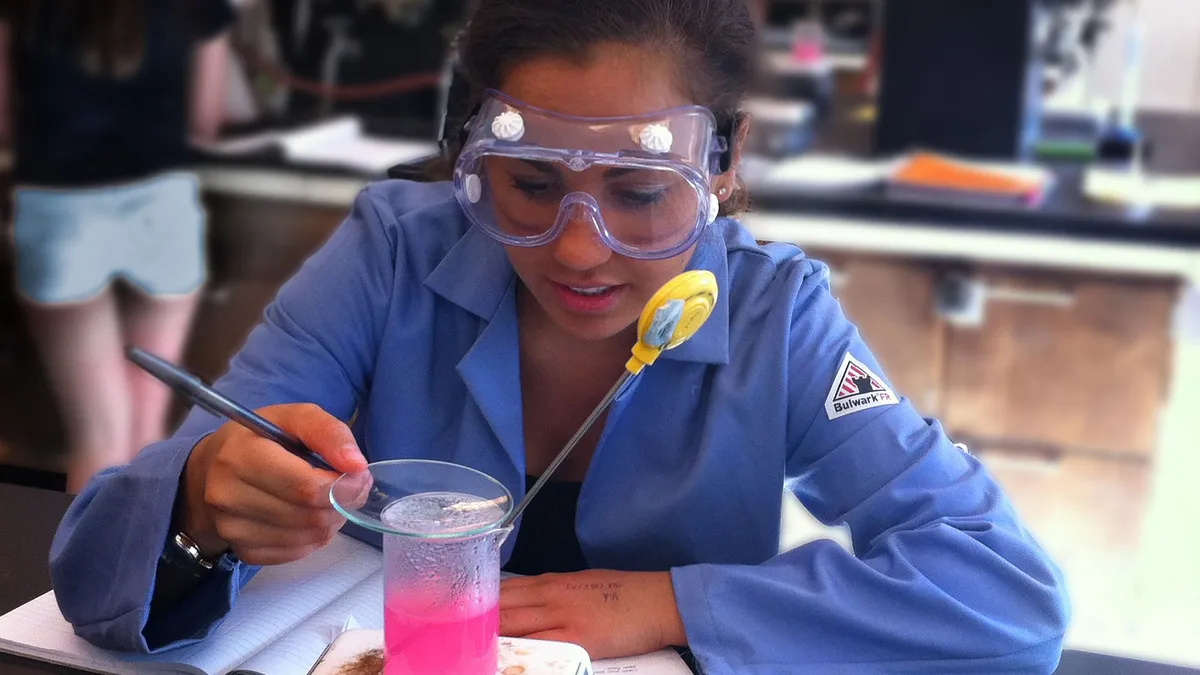After participating as a lead state in writing the Next Generation Science Standards, Washington adopted the NGSS in the fall of 2013. This is the first academic year schools are supposed to have fully implemented the standards in classrooms, and the state plans to pilot new test questions aligned to them this spring. By next year, the transition will be nearly complete.
Washington’s efforts put it at the head of the pack nationwide. Eighteen states and the District of Columbia have adopted the Next Generation Science Standards and all are at varying stages of readiness when it comes to assessing students based on them. California, for example, which approved a blueprint for aligning curriculum with the NGSS in November, will not have an operational test until the 2018-19 school year.
“The development of an assessment to the Next Generation Science Standards has unique challenges because of the three-dimensional nature of the standards,” said Dawn Cope, science assessment lead with the Washington State Office of Superintendent of Public Instruction.
Cope’s team has been developing test questions since the fall of 2015, soliciting expertise from teachers as the state builds its own, internal test bank.
The “three dimensions” of the Next Generation Science Standards are science and engineering practices, disciplinary core ideas, and crosscutting concepts. The practices are meant to ensure students understand and know what scientists actually do, and in lessons tied to the NGSS, students would engage in these practices to reinforce core ideas and cross-cutting concepts, both of which span four domains: physical science, life science, earth and space science, and engineering.
Gary Phillips, a vice president and institute fellow at the American Institutes for Research, says traditional tests in science have been two-dimensional — testing a discipline like biology along with a process like reasoning. Building a test around three dimensions is significantly more complicated and most states haven’t decided how they’re going to approach it.
Two models have risen to the fore among states that work with AIR, and assessments based on both would report out an overall score for test-takers as well as three subscores. Phillips said one model would be to have the subscores be based on NGSS dimensions — cross-cutting concepts, practices and core ideas. The subscores in the other model would be based on each discipline — one for practices and cross-cutting concepts in physical science, life science and earth science, respectively.
Washington is still deciding how it will report out the scores, knowing that either way will emphasize the three-dimensional nature of the new standards.
Cope said this spring, fifth and eighth graders will see sample questions from the coming NGSS assessment on their state test. To comply with federal law, 11th graders are also tested in science, and Washington requires students to pass a standardized test in biology to qualify for graduation. While sample questions from the new test can easily be embedded in the current middle school assessment — which is already administered online and is comprehensive across science disciplines — it is impossible to do the same at the high school level, where students have taken a biology-specific exam with paper and pencil.
The state is seeking volunteers for a computer-based field test this spring. Classes that are geared toward 11th graders, whether they’re science or not, are eligible.
Even as many state education officials shift their attention from implementation of the standards to design of assessments, some teachers are incorporating the Next Generation Science Standards into their classrooms without the pressure of tests. The text of the NGSS has been available online since it was in draft form, and teachers all over the country are reading the documents and embedding the concepts into their instruction.
For administrators who want to support these efforts, Ellen Ebert, director of science at the Washington State OSPI, recommends spending money wisely on professional learning rather than rushing to buy new materials.
“The most important aspects of the Next Generation Science Standards are around pedagogy and instruction and really picking through these three dimensions and what it means to be three-dimensional,” Ebert said. “It’s not about buying a new piece of equipment. It’s about investing in your teachers so they can bring this three-dimensionality to their instruction.”
For more about instructional shifts brought on by the Next Generation Science Standards, read our feature from August, “New science standards urge shift from ‘learning about’ to ‘figuring out.’”












